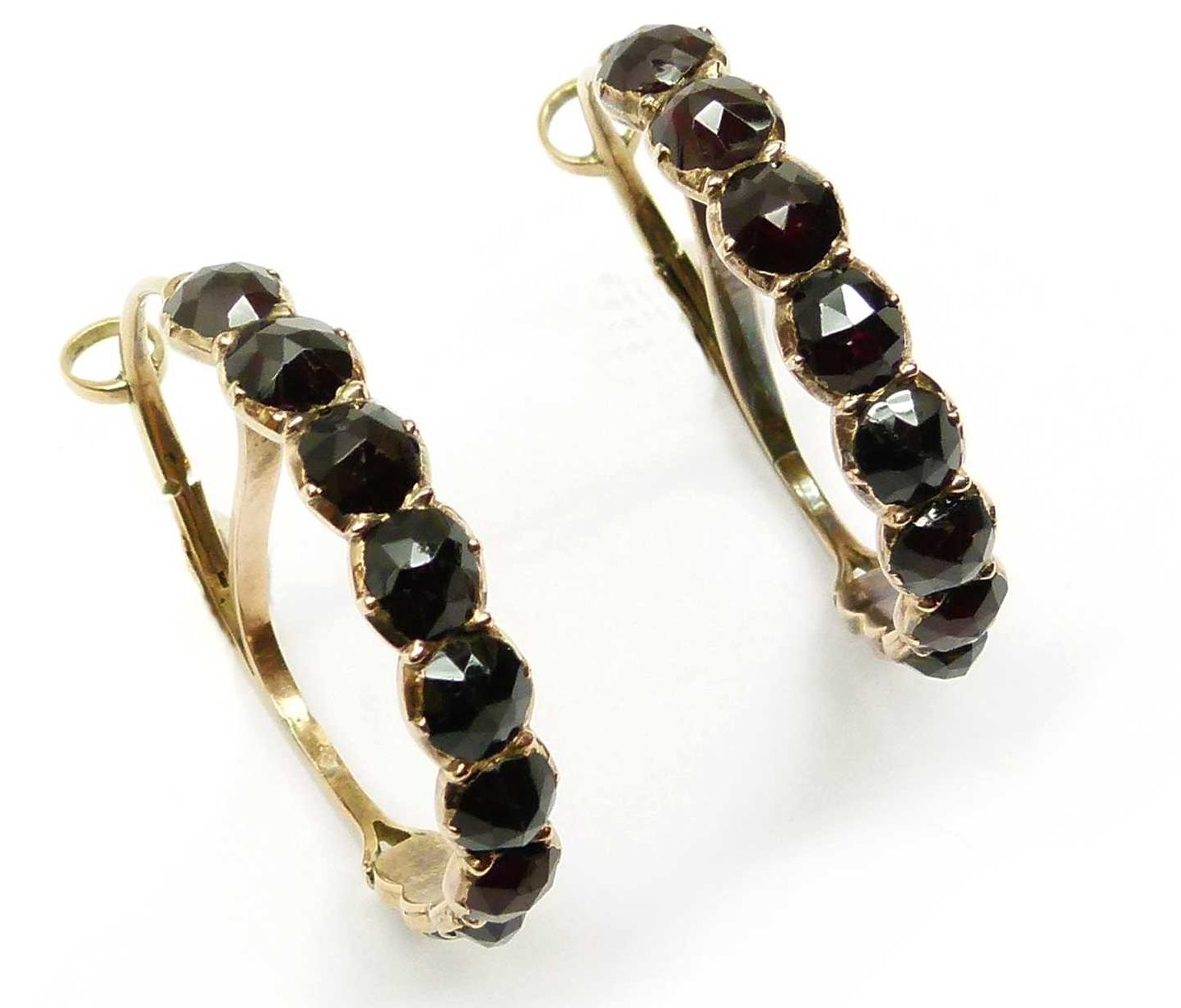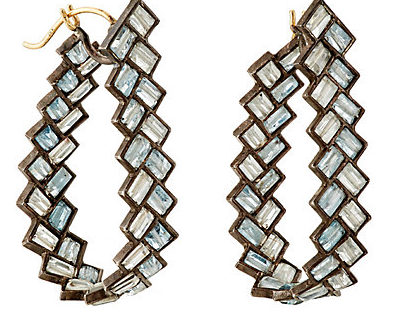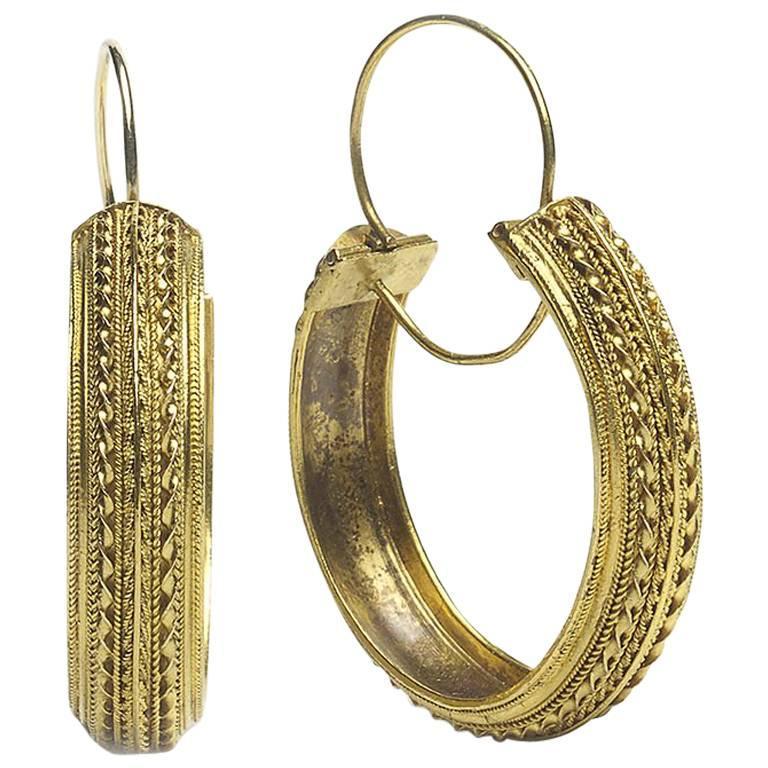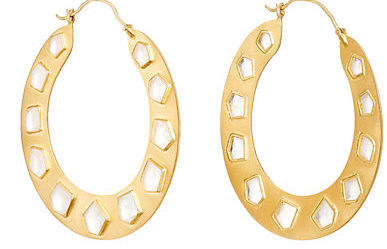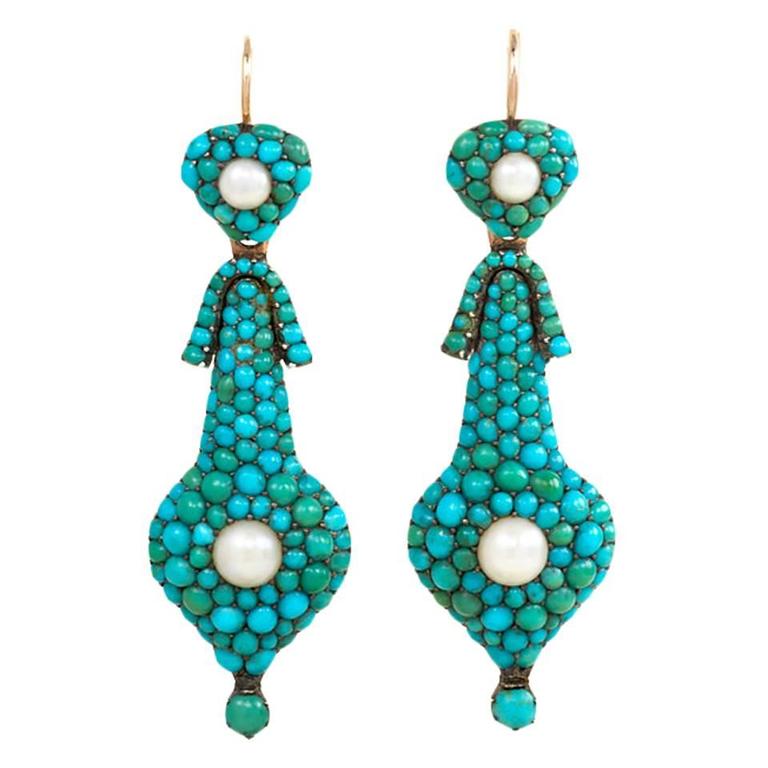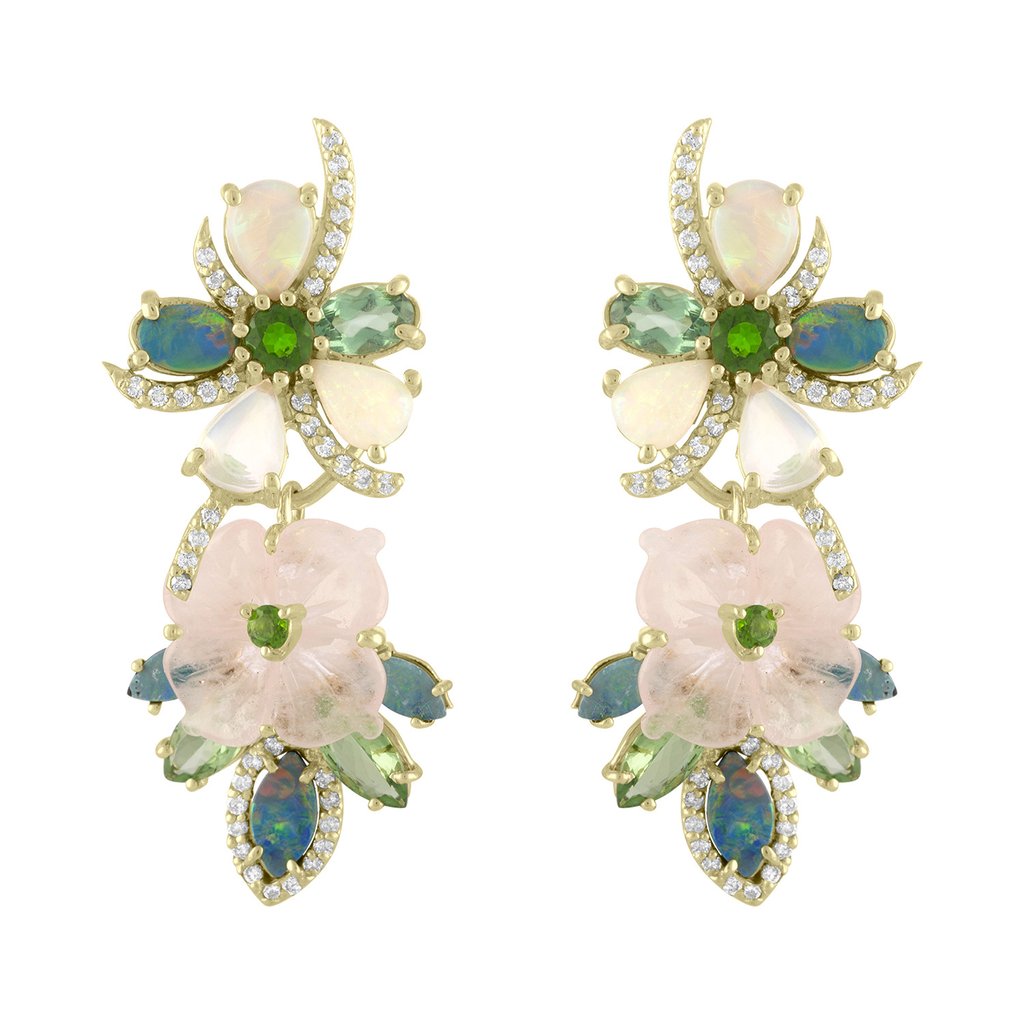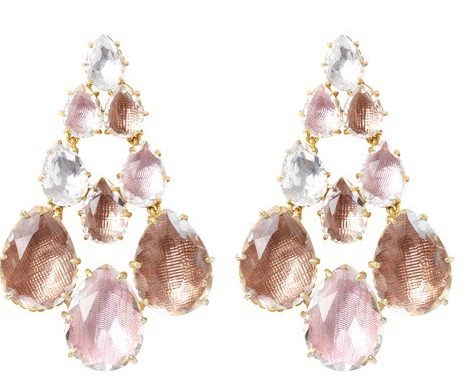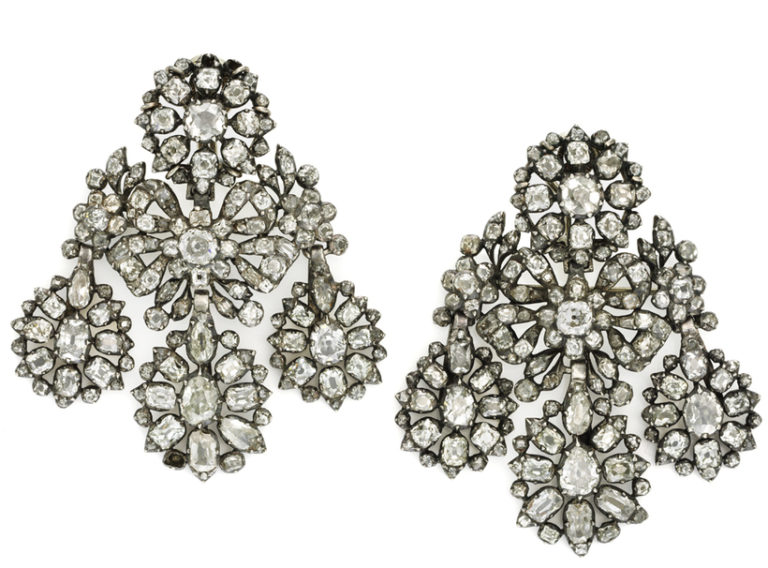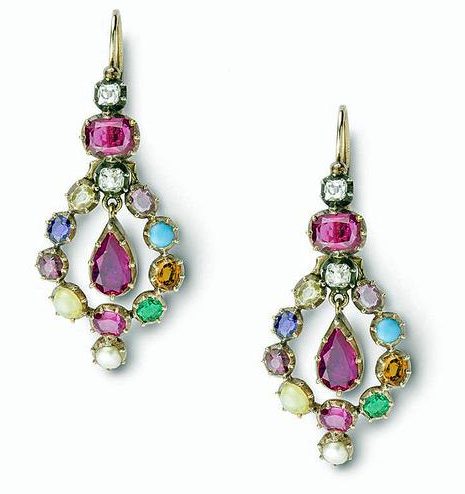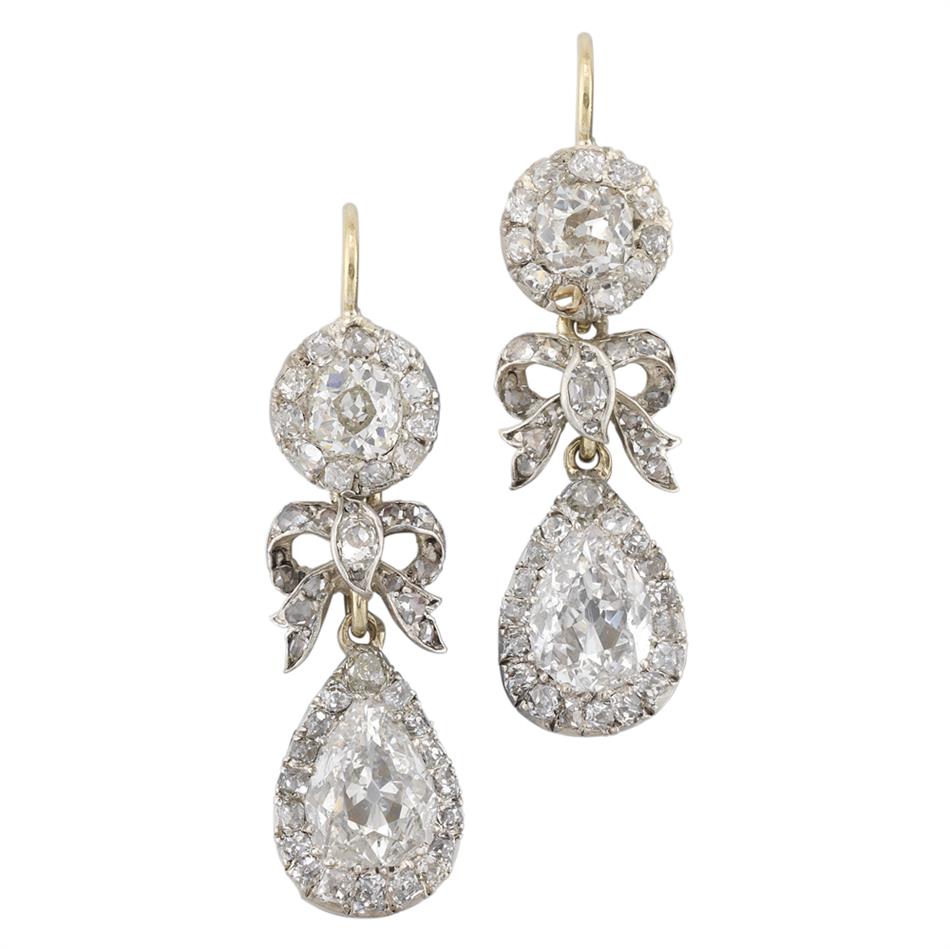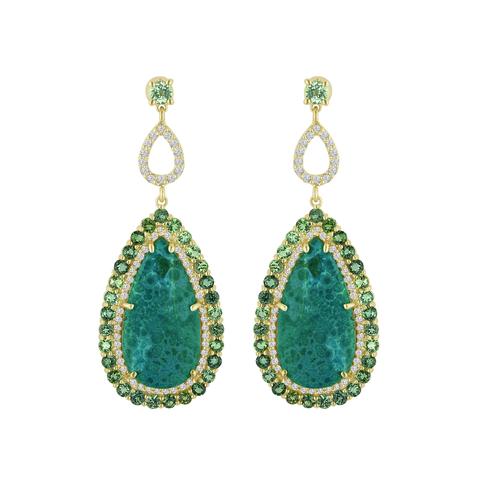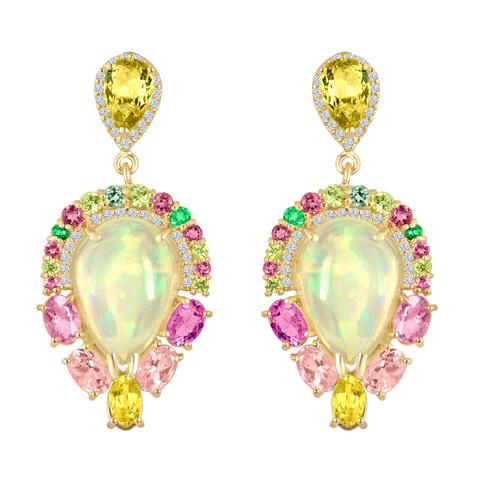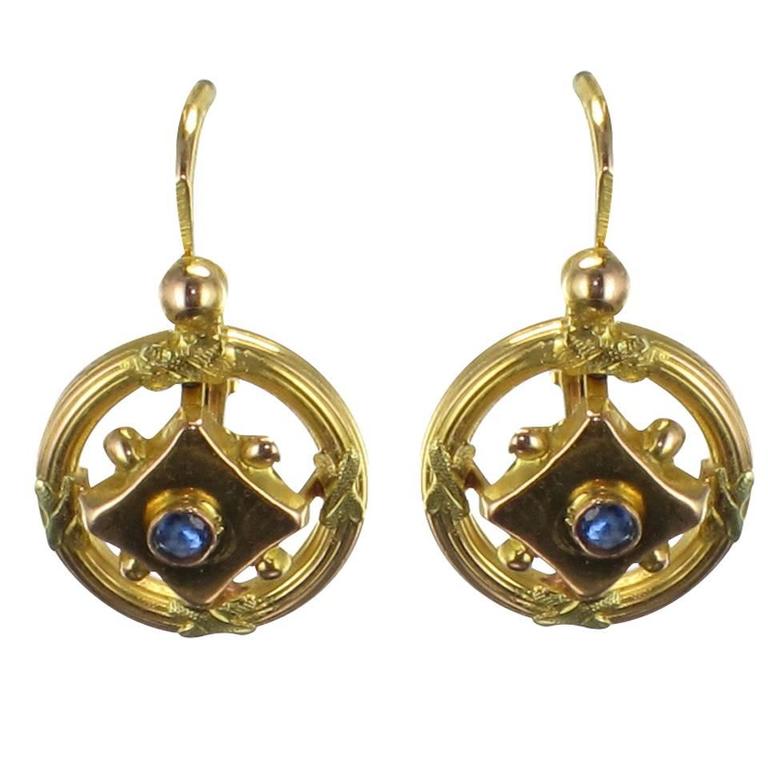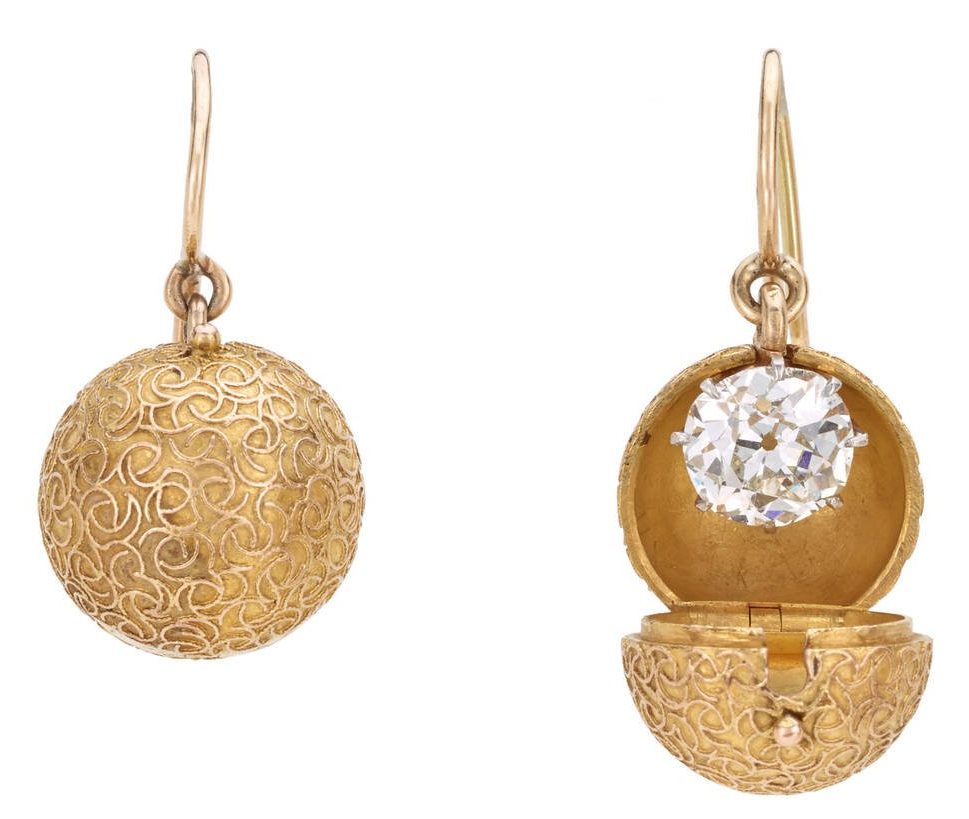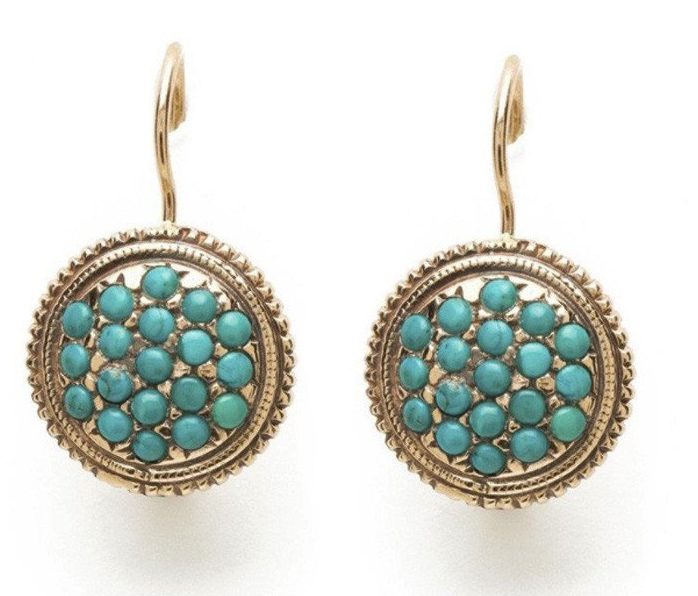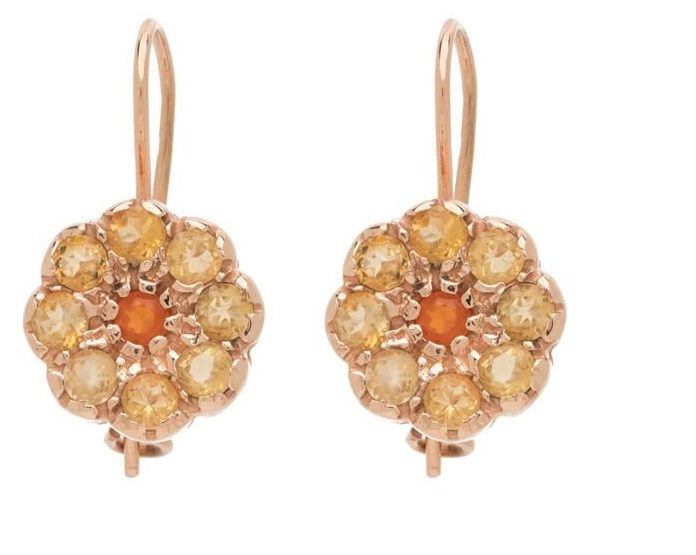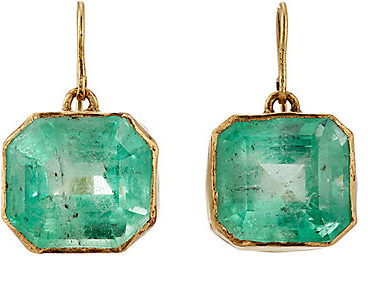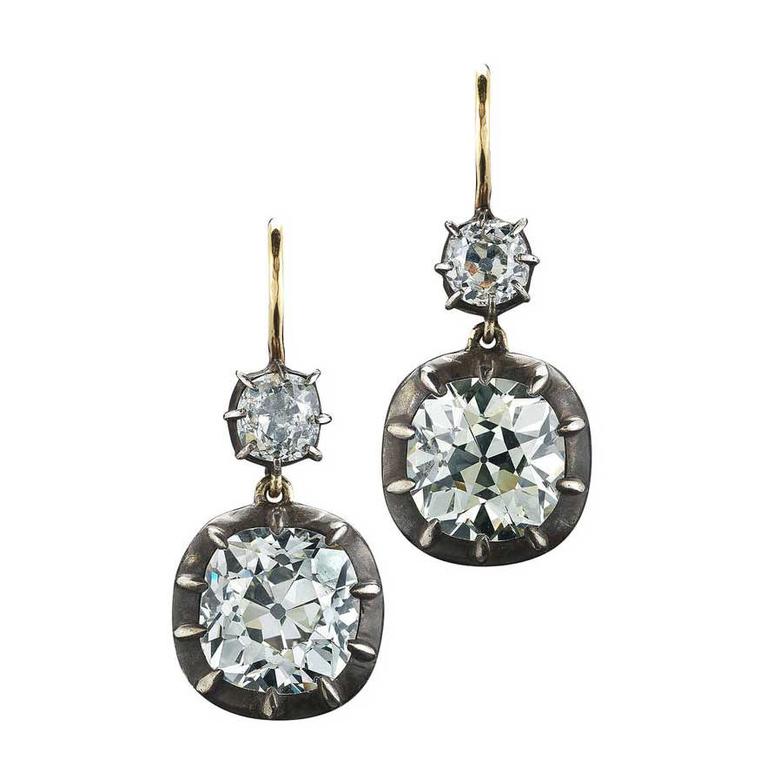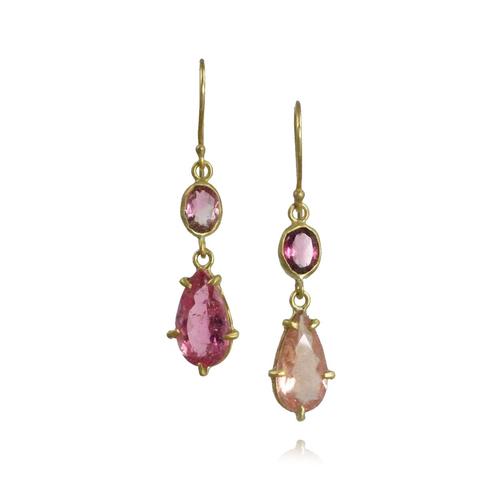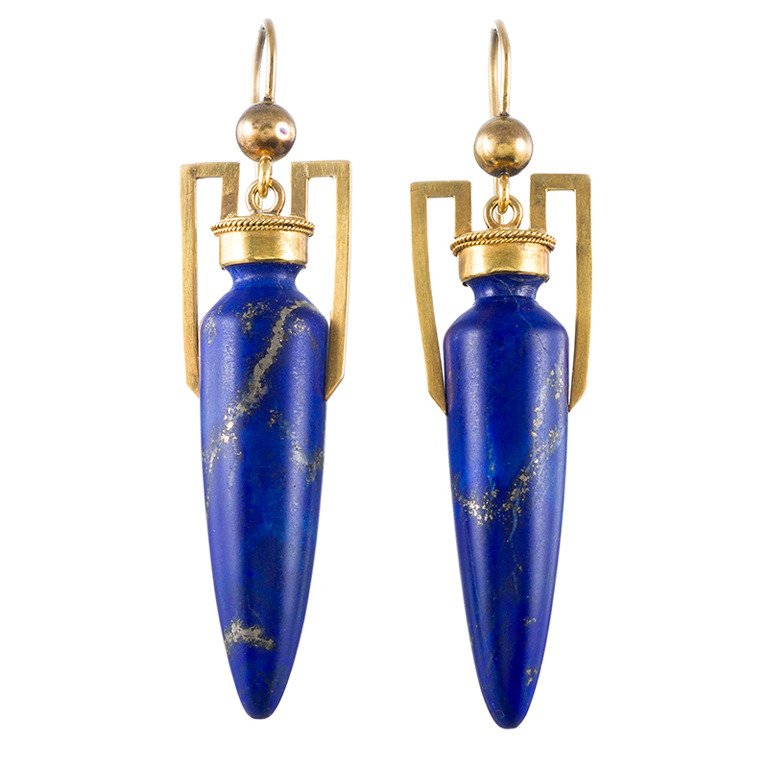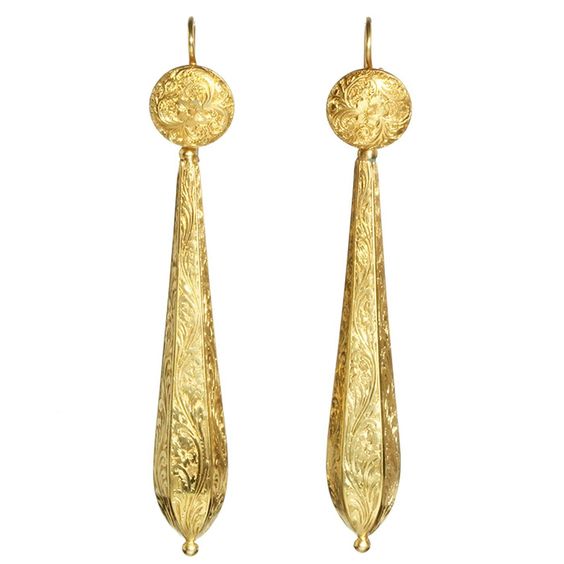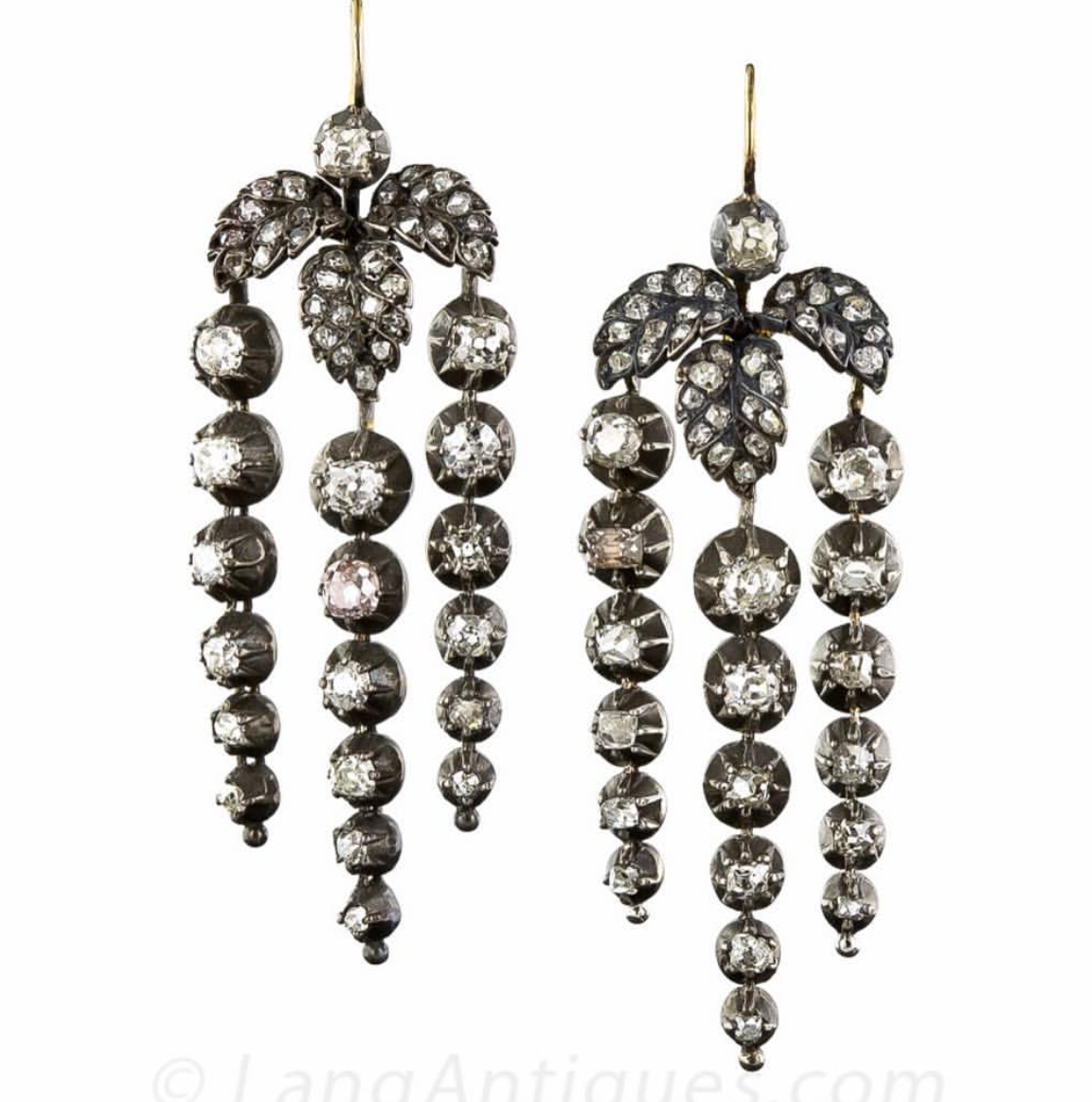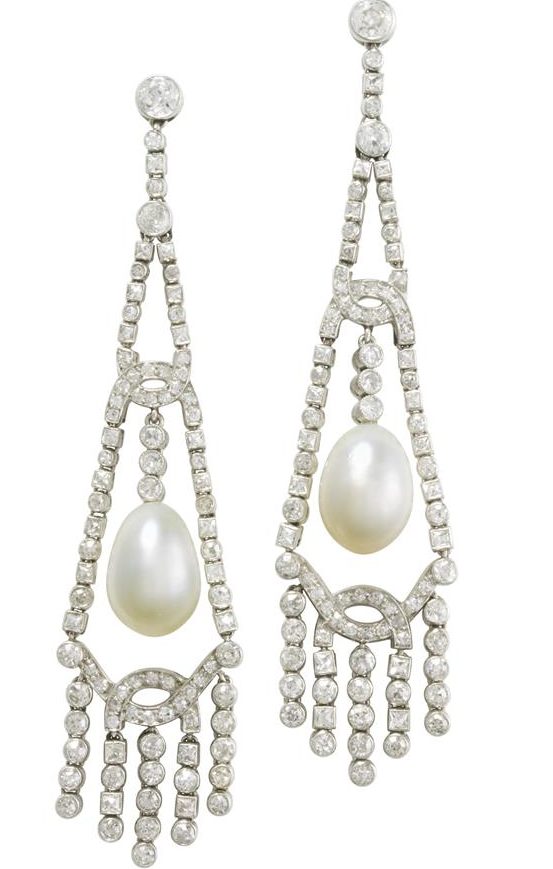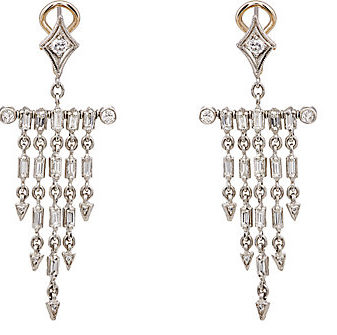Seven Styles of Earrings You will want to own
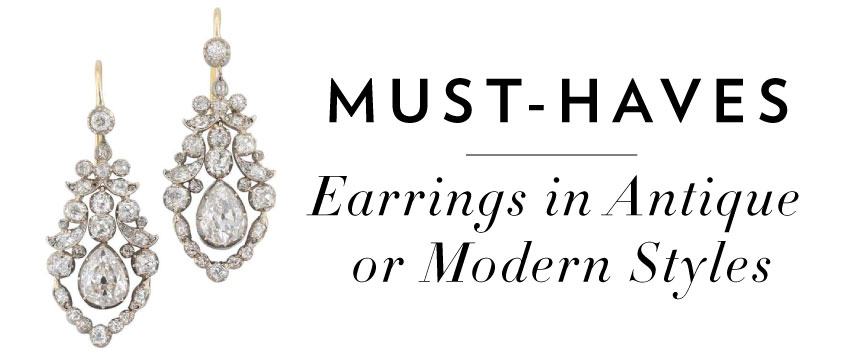
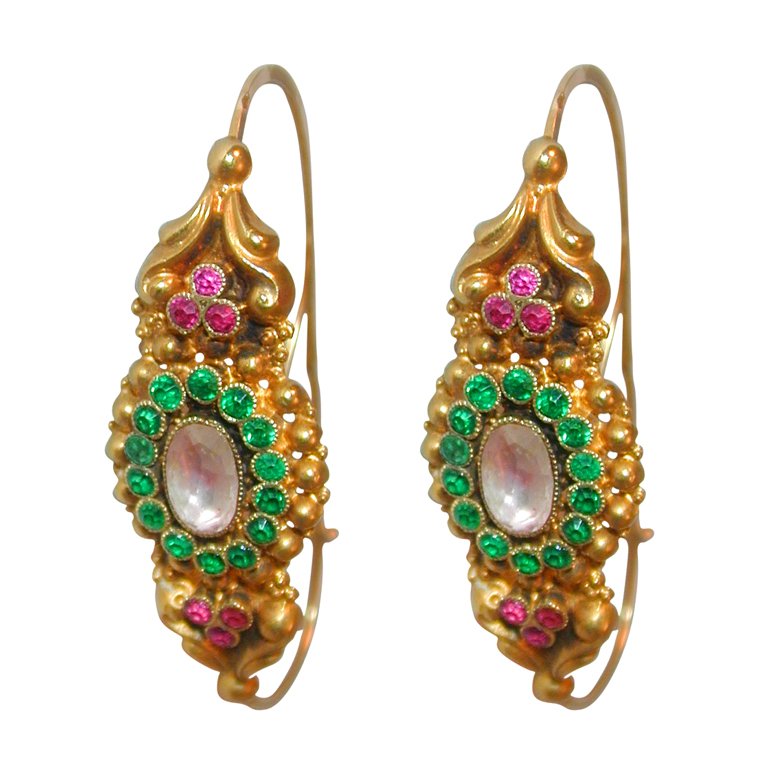
The Spare Room Antiques’ Georgian paste poissarde wire hoop earrings
Bejeweled’s second story in our April 2017 series on classic, must-have silhouettes that continue to withstand the test of time in all categories of jewelry.
Ear stacks, in which sporting different styles—ear climbers, jackets, multiple studs and mismatched pairs have fast become almost as popular as wearing fingers full of rings. Yet there are, and always will be certain silhouettes that comprise the most fashionable and enduring looks in earrings.
Sure, several piercings in each lobe seems to once again be de rigueur for those of us that didn’t have them done in the ‘70s or ‘80s. Jewelers are keeping up with this trend that continues to grow and multiply in variety. At the same time, independent designers and renowned houses consistently re-imagine the silhouettes that have been passed down through history, These looks might receive make-overs to keep relevant with the current jewelry climate but these antique and vintage inspired looks as well the rare authentic collectibles never really go out of style, they are always part of the #eargame.
.

Bentley & Skinner Georgian Diamond Pendant Earrings
I think about my grandmother while I was growing up and remember that she, like most women of her time, felt “undressed” without something dangly or shimmering in her lobes. This feeling, like certain earrings, has been passed down through generations. Her adage was “never leave the house without lipstick and earrings – so you can light up someone else’s face with your smile, and your own with something sparkly around it.” It would delight her to see all the fun and imagination in wearing earrings today.
Bejeweled takes a look at seven silhouettes that continue to be favorites, from the 17th century through present day and have become essential to a women’s jewelry collection.
– Hoop Earrings have been around for centuries and in all cultures, civilizations and on all continents. From the first known Sumerian versions, hoops traveled to Africa, Asia Ancient Egypt, Rome and Greece and have had quite a historical past, symbolizing everything from tribal identity to religious beliefs. As interesting as the styles from early antiquity’s crescent and boat shapes to the 19th and 20th century’s variety of sizes, widths, and design, hoops also had a bad rep during earlier times. They were worn by slaves (hence the term slave hoop) pirates and later associated with women in the ‘sex trade.’ But, since their welcome return during the free love, free-spirited ‘60s and the feminist movement of the ‘70s, hoops circle back into designer’s collections at least once or twice a decade and have become the favorite style of earring in a women’s jewelry wardrobe.
- S.J. Phillips’ Antique Garnet Hoops
- Nak Armstrong’s modern Labradorite hoops
- Moira Fine Jewelry’s Victorian Era Etruscan Revival Hoops
- Munnu’s modern diamond studded high karat. gold hoops
-Day to Night earrings were first fashionable during the 18th century when designers were creatively whipping up parures, demi-parures and jewels that had multiple fittings. This style continued to designed as part of a suite or as versatile convertibles throughout the mid 20th century. They were created with a mechanism or simply a wire that would allow the dangling long part of the earring to be detached from the equally detailed top. The tops were meant to be worn during the daytime, while the entire earring would be worn for evenings and special occasions. Savvy contemporary designers are upping their game by recreating this two-looks-in-one silhouette or extending it to include a top, center and bottom that transforms into one, two or three different styles.
- The Spare Room’s Day To Night Georgian Earrings
- Kentshire Galleries’ Turquoise Victorian Day to Night Earrings
- Eden Presley’s Day to Night Convertible Earrings
– Girandoles are described as earrings consisting of a central ornament with three drops, most often pear shaped, suspended from a hook. These also first become popular in the early 18th century. Many of these were convertible to day-to-night earrings as well. The drop part could be detached so that the central motif, for example a bow or a cluster, could be worn on its own. These earrings started out wider and shorter but grew more vertical and lightweight in later years because the originals were weighed down wit heavier metal to secure the many stones. Today they are airier and more delicately designed, shown in all metals and colored stones.
- Larkspur and Hawk’s modern girandole style earrings with Georgian inspired folled back gemstones
- Pat Saling’s 18th century girandole earrings
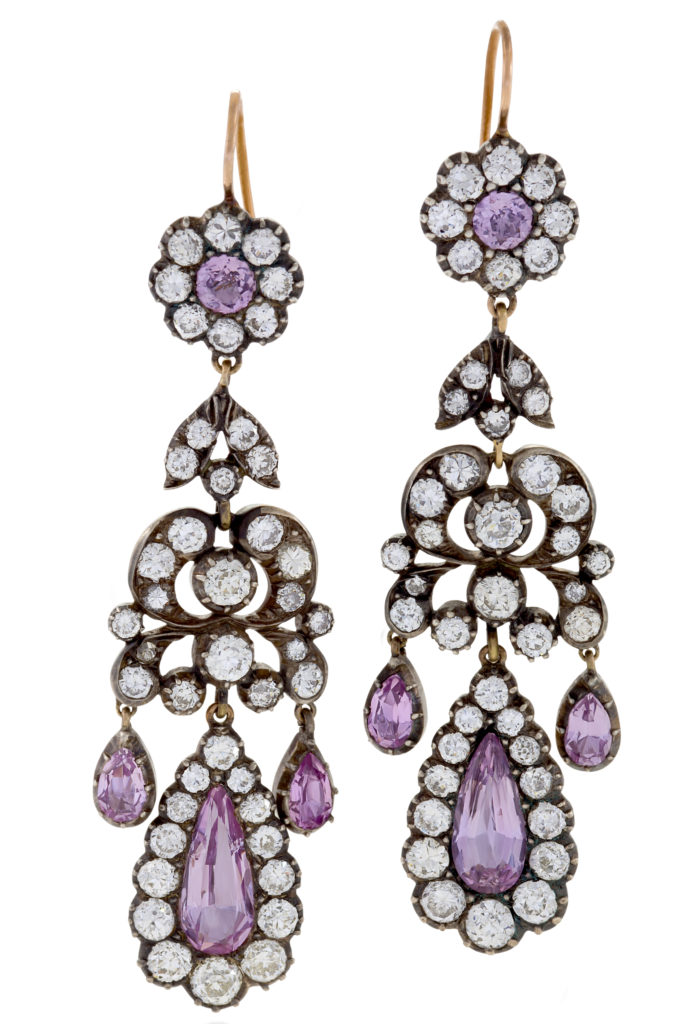
Macklowe Gallery’s Georgian girandole earrings that are also night and day styles
-Pendeloque earrings were designed with rose and old mine-cut pear shaped diamonds, which hung from a central cluster, bow, or larger diamond. The later Edwardian/Belle Époque versions were generally in pear or marquise-shaped frames, which surrounded an elaborate swing center of diamonds or one natural pear-shaped pearl. They continued to be in fashion from the 18th century through the early 20th century with ornamental embellishments. Eventually, they evolved into pendant earrings, which could be extremely lightweight and either inspired by the detailed flourishes of the antique styles or modernized with a gemstone top and a pear shaped gemstone drop. Today we are seeing pendant earrings with a variety of cuts of colored gemstones in settings that range from prong to bezel or those with pave surrounds. They are easy to wear and versatile enough to work with any outfit when you are rushing to get out of the house.
- Two different antique Pendeloque earring styles from Bentley & Skinner
- Two pairs of modern pendant earrings by Eden Presley
Sleeper or dormeuse earrings started out as single old mine, cushion cut or rose cut diamonds or colored gemstones in a crown-style setting and were often worn to bed to keep the earlobe hole from closing during the mourning period of Queen Victoria, when ears were covered by hair and could not readily be seen. These were followed by double drops, which featured one stationary stone fixed on a wire mechanism, and one that dangled, which offered more light and movement. This design offered a pretty delicate look in old mine-cut or European-cut diamonds or small cluster styles that featured turquoise, ruby or sapphire stone in the center. Both sleeper and double drops are extremely popular today among all generations of women. These days they also act as the perfect styles for second and third holes in multiple piercings. An idea would be to wear a longer pendant drop, a double drop and then a single sleeper if you prefer wire earrings to posts and hoops.
- Baume’s antique sleeper earrings with sapphires
- Past Era Victorian Dormeuse diamond earrings with coach covers
- Two pairs of Arik Kastan modern day sleeper earrings
- Judy Geib modern emerald sleepers
- Fred Leighton’s antique double drops
- Margery Hirschey’s modern double drops
– Torpedo styles offered the 19th century version of ultra-long linear silhouettes, which also featured bullet-like bottoms and were often decorated with detailed gold work in the Etruscan revival style. These evolved into lighter-weight versions, stamped out of thin gold sheet with repoussé, meaning embossed, patterns of foliate, shell and scroll motifs, which were much more accessible and also lighter on the lobe. Today torpedoes are often shown in opaque gemstones in bullet-like or elongated skinny pear shapes. Sleeping beauty turquoise, chalcedony, opal and chrysoprase are some of the most widely used stones for this style today.
- Fourtane’s lapis Etruscan revival torpedo earrings
- Victorian engraved torpedo earrings
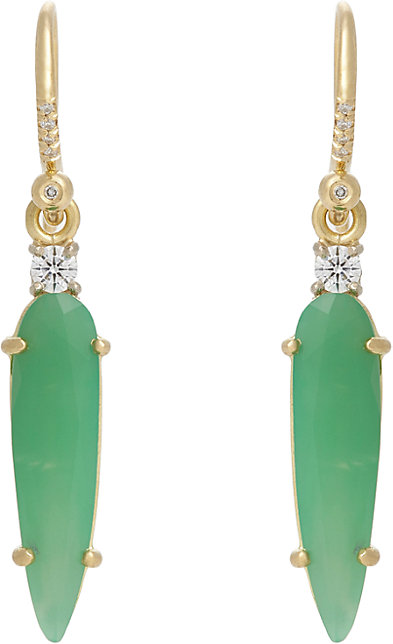
Irene Neuwirth modern torpedo earrings in chrysoprase with diamond accents
Fringe earrings were, and still are, a favorite among jewelry enthusiasts. At the height of style in the mid 19th century, they were mainly designed with a circular or oval plaque in the centre, and decorated with enamel, beadwork or chasing and gemstones with chain fringe. During the Jazz Age of the 1920s, when women hiked up their skirts and bobbed their hair, they wore their earrings long with lots of movement. In the same way the bottom of their dresses were designed to shimmy when they danced the night away, their earrings swayed with swingy diamond fringe. Current designs mix chain and small varied cuts of diamonds or colored gemstones for the glittery effect of dancing with the light.
- Lang Antiques early fringe arrings
- Bentley & Skinner Deco Fringe earrings
- Cathy Waterman modern Fringe earrings
Whether you are adding to your earring wardrobe or you are just starting one—there are many styles, from which to choose—which will add some sparkle around your face and never allow you to leave the house feeling ‘undressed’.
Similar Stories
Penny Preville: On Building An Earring Wardrobe
Eight Styles of Rings you will want to own
Five Jewels To Buy Now
The Allure of Antique, Retro and Vintage Bracelets

